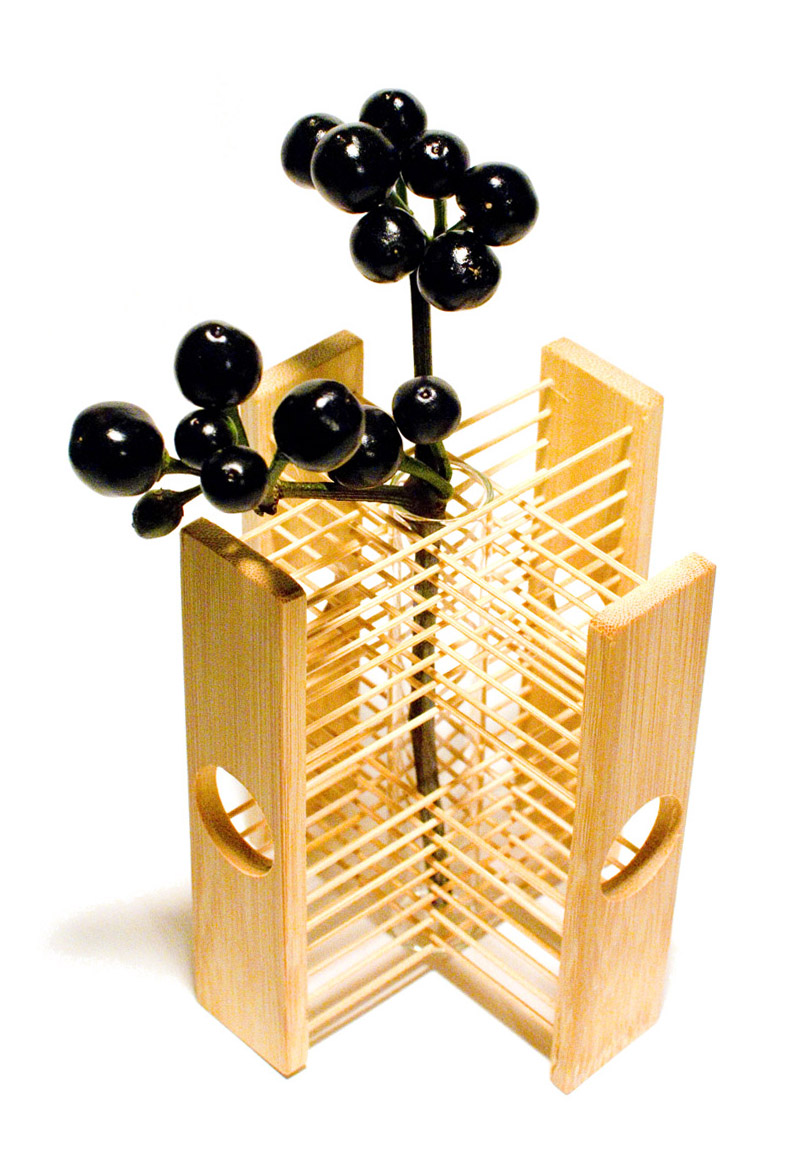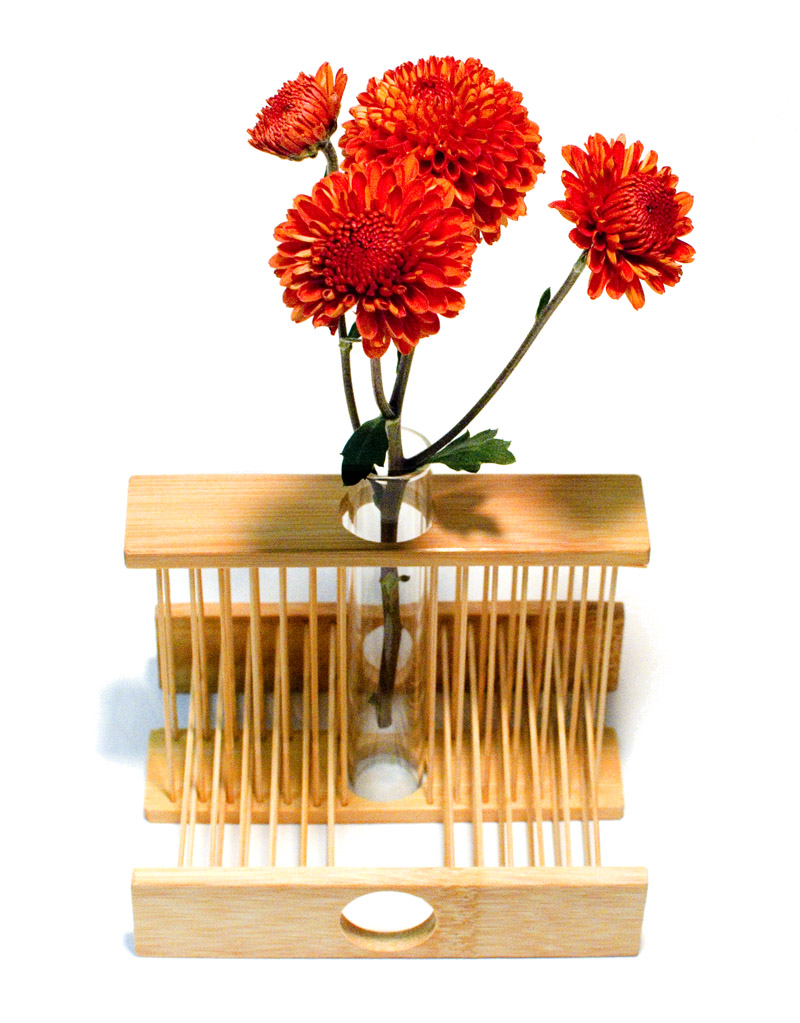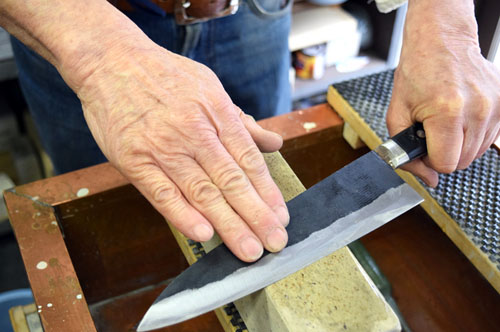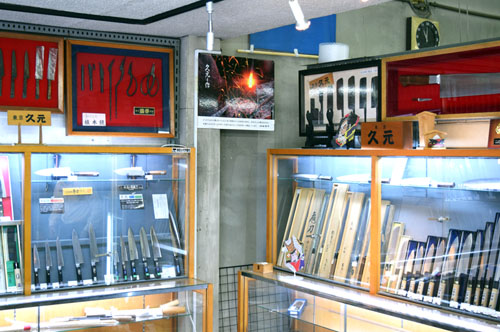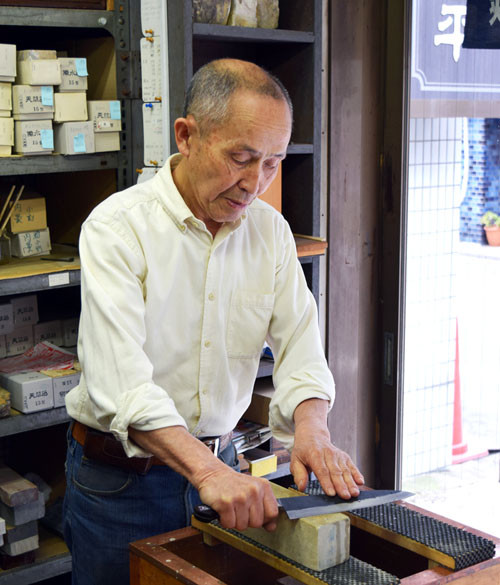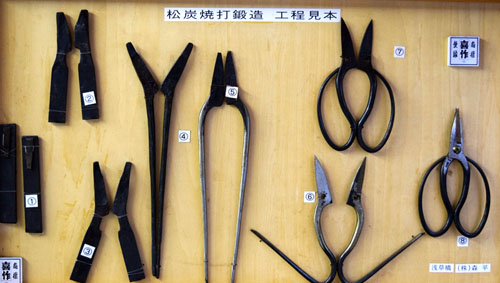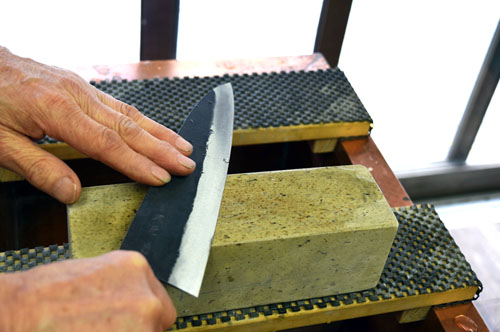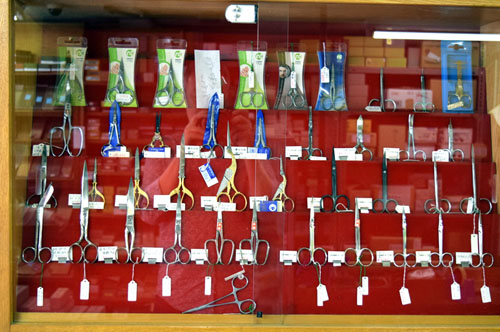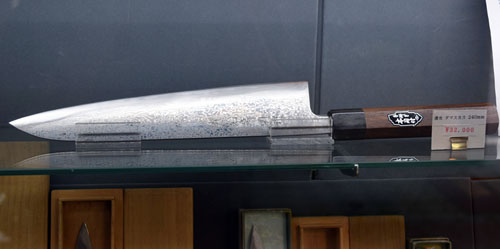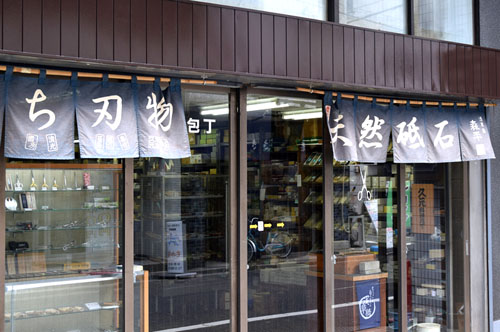There was one item that stood out among the knives and scissors in the window at Morihei, a traditional Showa-era shop with sliding glass doors and noren curtains in Tokyo's Asakusabashi district.
It looked like a tuning fork with sharpened tines.
According to Akimitsu Oguro, the spry and talkative president of the company, "it's an arrowhead used by Yabusame archers (practitioners of traditional Japanese mounted archery). The two-pronged head causes the arrow to spin for greater accuracy."
Inside the shop, the floor was bare concrete, and the large two-story room contained only a few glass cases of knives and scissors. The walls were piled high with shelves full of flat polishing stones that extended past the second-floor balcony and up the ceiling of the third floor. The dusty stones range in price from a few thousand yen to 500,000 yen. It seems strange that this low-key, industrial-looking store could attract customers from around the globe to learn its secrets.
A Fourth-Generation Togishi Master
"The company started with my grandfather Morihei Oguro in 1933. At the time, there were many small forges in downtown Tokyo. My grandfather acted as a quality grader for the local blacksmiths. It's only when you sharpen a blade that you can tell its quality. If it's too hard, the blade cannot be sharpened. A good blade is soft enough to be sharpened and given an edge."
"After identifying the most skilled swordsmiths, Morihei commissioned them to make a range of tools from raw materials he provided. The finished items were then brought back here to be sharpened by our togishi (polishers)." The current range of products includes sushi knives, chef's cleavers, carpenter's chisels and planes, gardener's shears, and many types of scissors. The shop also sells natural polishing stones in many grades, and the staff can recommend a polishing stone for each particular tool.
Upstairs in the third-floor president's office there's an impressive black-and-white photograph of twenty stern-looking men in kimono. It looks as though it could be from the Edo era, but it's from 1933, and shows the founding of the company. "That's Morihei and his staff in the first row. The men behind him are all master swordsmiths and their disciples from the Tokyo forges."
A Smooth Groove and a Sharp Edge
The current president follows in the footsteps of his grandfather, father and elder brother. "I was sent out to study the craft of blade polishing. After forty years experience, I can tell a good blade just by looking at it, how well it's forged by the groove in the rear of the blade, whether the groove is smooth or not, the color of the hagane (edge) and shingane (core), and then the polish, whether it's really sharpened smoothly from base to tip. And as for the polishing stone, you can only tell a good stone by sharpening a blade on it." His son is already being trained up to take over as the fifth generation leader of the company.
Downstairs in the shop, Mr. Oguro demonstrates the difference between a natural stone and an artificial one. "The thing about artificial stones is that they are porous so you have to keep adding water as you polish. Natural stones preserve a film of water on the surface. The trick to polishing is to always sharpen the edge as you push the blade away from you, and never on the return stroke. By only sharpening in one direction, you can better control the angle and force. In addition, a blade sharpened on a natural stone stays sharp longer and requires less maintenance."
"The unique facet of Japanese blades is that they are forged in two pieces - a hard edge and a soft core. The soft core protects the edge, so it makes sharpening easy. No matter how hard the edge is, the core covers it and protects it. If the blade is all hard steel, it could snap easily during polishing. Everyone talks about the edge all the time, but in fact the soft core is just as important."
Despite little advertising, Morihei receives enquiries and visitors from as far afield as the US, the UK, Russia, France, Italy, Brazil and Australia. Recently an Italian razor manufacturer inquired about the best natural polishing stones to suit his straight-edge razors. Word of mouth among European chefs has led to a steady stream of chefs buying knives and learning how to maintain them with their own polishing stones. Customers in Japan include sushi chefs, musical-instrument makers, furniture-makers, gardeners and other craftsmen who appreciate the value of fine tools.
Turning Swords into Plowshares
In the nineteenth century, master swordsmiths flocked to Tokyo to supply the city's huge number of resident samurai. The booming industry was rocked by the Sword Abolishment Edict of 1876, however, which prohibited samurai from carrying swords. To survive, swordsmiths were suddenly forced to start making agricultural tools, cutlery, shears and scissors. Centuries of traditional metalworking technology were thus channeled into kitchen knives.
Fifty years later, Morihei was able to harness this surviving craftsmanship into its blade business. Even today, it maintains the traditional methods. Knives are still manufactured by famous forges such as Kunihide, Kisaku, Kikuyuu and Hisamoto and are still polished by master togishi on natural stones. The company has also developed a hybrid stone, Karasu, that has the water-retaining capacity of natural stone and the nonslip quality of artificial stone.
As Japan adopts modern cheap, disposable culture, Mr. Oguro has found it necessary to take his craft on the road. He regularly appears at craft fairs and in-store promotions at Tokyu Hands and other department stores. He's delighted to find new customers and aficionados among teenage apprentices and young amateur cooks. In the traditionalist sushi and carpentry worlds, an apprentice can be hired or fired based on the condition of his tools. In those strict worlds, a keen Morihei blade proves that the newbie knows his tools.
Today, in a quaint corner of downtown Asakusabashi, Akimitsu Oguro no longer simply sells knives and polishing stones, but instead quietly sells the story behind the products: the centuries of tradition, craft and quality.
[Note: This article originally appeared, in a slightly different form, in Ignition Magazine.]
